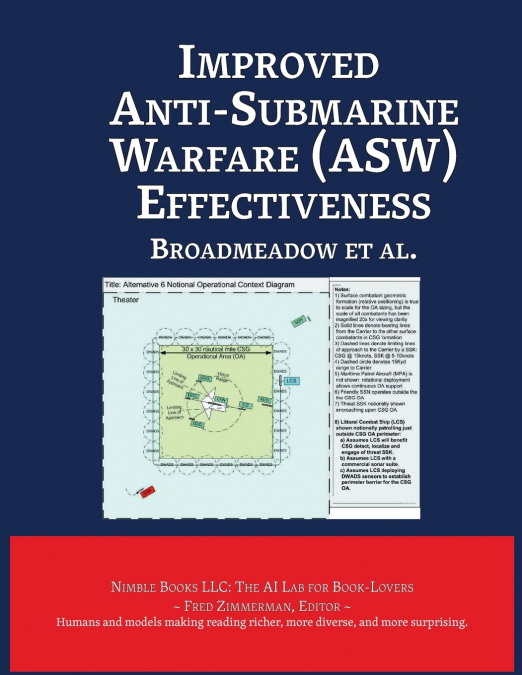
 Donde los libros
Donde los libros
 Librería 7artes
Librería 7artes
 Librería Elías (Asturias)
Librería Elías (Asturias)
 Librería Kolima (Madrid)
Librería Kolima (Madrid)
 Librería Proteo (Málaga)
Librería Proteo (Málaga)
This joint thesis project by fifteen graduate students at the Naval Postgraduate School in 2007 displays impressive system engineering and analysis skills in evaluating 14 alternative approaches to improving carrier battle group ASW defense. Unfortunately, one of the leading recommendations has been overtaken by time. The authors found that ''a distributed barrier of active sensors placed and maintained by a Littoral Combat Ship provided an effective detection and engagement solution.'' The basic idea of deploying a barrier of active sensors still sounds good, but it won’t be the LCS that is deploying them.This document is a report on the Improved Anti-Submarine Warfare (ASW) Effectiveness project conducted by the Newport cohort of the Naval Postgraduate School. The objective of the project was to address the need for improved ASW effectiveness in protecting a Carrier Strike Group (CSG) during operations. The report outlines the application of a Systems Engineering Design Process (SEDP) to analyze the problem, identify potential solutions, and evaluate them based on measures of effectiveness and performance. The report also includes a detailed description of the needs analysis phase, which involved stakeholder analysis, affinity diagramming, and Pareto analysis to identify the key stakeholder needs and constraints. The report concludes with a recommendation for an alternative solution that combines the use of a barrier of buoys deployed by a Littoral Combat Ship (LCS) with advanced capability improvements to the platform-based active sonar. This annotated edition illustrates the capabilities of the AI Lab for Book-Lovers to add context and ease-of-use to manuscripts. It includes five types of abstracts, building from simplest to more complex: TLDR (one word), ELI5, TLDR (vanilla), Scientific Style, and Action Items; three essays to increase viewpoint diversity: Grounds for Dissent, Red Team Critique, and MAGA Perspective; and Notable Passages and Nutshell Summaries for each page.